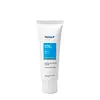What's inside
What's inside
 Key Ingredients
Key Ingredients

 Benefits
Benefits

 Concerns
Concerns

No concerns
 Ingredients Side-by-side
Ingredients Side-by-side

Water
Skin ConditioningCoco-Caprylate/Caprate
EmollientDisodium Acetyl Glucosamine Phosphate
Skin ConditioningC13-15 Alkane
SolventNeopentyl Glycol Diheptanoate
EmollientGlycerin
HumectantDiisopropyl Sebacate
EmollientMethylene Bis-Benzotriazolyl Tetramethylbutylphenol
UV FilterXylitylglucoside
HumectantDiethylhexyl Butamido Triazone
UV AbsorberC20-22 Alkyl Phosphate
EmulsifyingCaprylhydroxamic Acid
Dimethicone
EmollientBis-Ethylhexyloxyphenol Methoxyphenyl Triazine
Skin ConditioningHydroxyethyl Acrylate/Sodium Acryloyldimethyl Taurate Copolymer
Emulsion StabilisingButylene Glycol
HumectantPrunus Yedoensis Leaf Extract
Skin ConditioningHydrogenated Rapeseed Oil
EmollientCaprylyl/Capryl Glucoside
CleansingAcacia Senegal Gum
MaskingPolyacrylate Crosspolymer-6
Emulsion StabilisingTrisodium Ethylenediamine Disuccinate
Arachidyl/Behenyl Alcohol
EmulsifyingXanthan Gum
EmulsifyingSodium Hydroxide
BufferingWater, Coco-Caprylate/Caprate, Disodium Acetyl Glucosamine Phosphate, C13-15 Alkane, Neopentyl Glycol Diheptanoate, Glycerin, Diisopropyl Sebacate, Methylene Bis-Benzotriazolyl Tetramethylbutylphenol, Xylitylglucoside, Diethylhexyl Butamido Triazone, C20-22 Alkyl Phosphate, Caprylhydroxamic Acid, Dimethicone, Bis-Ethylhexyloxyphenol Methoxyphenyl Triazine, Hydroxyethyl Acrylate/Sodium Acryloyldimethyl Taurate Copolymer, Butylene Glycol, Prunus Yedoensis Leaf Extract, Hydrogenated Rapeseed Oil, Caprylyl/Capryl Glucoside, Acacia Senegal Gum, Polyacrylate Crosspolymer-6, Trisodium Ethylenediamine Disuccinate, Arachidyl/Behenyl Alcohol, Xanthan Gum, Sodium Hydroxide
Water
Skin ConditioningOctocrylene
UV AbsorberDiisopropyl Adipate
EmollientPropylene Glycol Dicaprylate/Dicaprate
EmollientC12-15 Alkyl Benzoate
AntimicrobialDiisopropyl Sebacate
EmollientButyl Methoxydibenzoylmethane
UV AbsorberIsododecane
EmollientNiacinamide
SmoothingArachidyl Alcohol
EmollientBehenyl Alcohol
EmollientArachidyl Glucoside
EmulsifyingCaprylic/Capric Triglyceride
MaskingTitanium Dioxide
Cosmetic ColorantEthylhexyl Triazone
UV AbsorberPEG-100 Stearate
Glyceryl Stearate
EmollientButylene Glycol
HumectantLinoleic Acid
CleansingLinolenic Acid
CleansingPanthenol
Skin ConditioningSodium Hyaluronate
HumectantAllantoin
Skin ConditioningTocopheryl Acetate
AntioxidantRetinol
Skin ConditioningPolysorbate 20
EmulsifyingHydroxyethyl Acrylate/Sodium Acryloyldimethyl Taurate Copolymer
Emulsion StabilisingXanthan Gum
EmulsifyingPolyacrylate Crosspolymer-6
Emulsion StabilisingSilica
AbrasiveAcacia Seyal Gum
HumectantPhenoxyethanol
PreservativeEthylhexylglycerin
Skin ConditioningTrisodium Ethylenediamine Disuccinate
Water, Octocrylene, Diisopropyl Adipate, Propylene Glycol Dicaprylate/Dicaprate, C12-15 Alkyl Benzoate, Diisopropyl Sebacate, Butyl Methoxydibenzoylmethane, Isododecane, Niacinamide, Arachidyl Alcohol, Behenyl Alcohol, Arachidyl Glucoside, Caprylic/Capric Triglyceride, Titanium Dioxide, Ethylhexyl Triazone, PEG-100 Stearate, Glyceryl Stearate, Butylene Glycol, Linoleic Acid, Linolenic Acid, Panthenol, Sodium Hyaluronate, Allantoin, Tocopheryl Acetate, Retinol, Polysorbate 20, Hydroxyethyl Acrylate/Sodium Acryloyldimethyl Taurate Copolymer, Xanthan Gum, Polyacrylate Crosspolymer-6, Silica, Acacia Seyal Gum, Phenoxyethanol, Ethylhexylglycerin, Trisodium Ethylenediamine Disuccinate
 Reviews
Reviews

Ingredients Explained
These ingredients are found in both products.
Ingredients higher up in an ingredient list are typically present in a larger amount.
Butylene Glycol (or BG) is used within cosmetic products for a few different reasons:
Overall, Butylene Glycol is a safe and well-rounded ingredient that works well with other ingredients.
Though this ingredient works well with most skin types, some people with sensitive skin may experience a reaction such as allergic rashes, closed comedones, or itchiness.
Learn more about Butylene GlycolWe don't have a description for Diisopropyl Sebacate yet.
This is a synthetic polymer. It helps improve the texture of products by adding thickness and gel-like feel.
It is also an emulsifer, meaning it prevents ingredients such as oil and water from separating. It also helps evenly disperse other ingredients.
Polyacrylate Crosspolymer-6 is a texture enhancer and pH adjuster.
It is be used to thicken water-based products and create a gel-texture with a velvet feel.
One manufacturer claims this ingredient to have a pH range of 2-8 and to be biodegradable.
Learn more about Polyacrylate Crosspolymer-6Trisodium Ethylenediamine Disuccinate is used to help stabilize a product.
It is a chelating agent, meaning it helps prevent metal ions from binding to other ingredients. This prevents unwanted reactions in products. Metal ions can come into a product via the water ingredient. They are found in trace amounts and are not known to be harmful.
Water. It's the most common cosmetic ingredient of all. You'll usually see it at the top of ingredient lists, meaning that it makes up the largest part of the product.
So why is it so popular? Water most often acts as a solvent - this means that it helps dissolve other ingredients into the formulation.
You'll also recognize water as that liquid we all need to stay alive. If you see this, drink a glass of water. Stay hydrated!
Learn more about WaterXanthan gum is used as a stabilizer and thickener within cosmetic products. It helps give products a sticky, thick feeling - preventing them from being too runny.
On the technical side of things, xanthan gum is a polysaccharide - a combination consisting of multiple sugar molecules bonded together.
Xanthan gum is a pretty common and great ingredient. It is a natural, non-toxic, non-irritating ingredient that is also commonly used in food products.
Learn more about Xanthan Gum